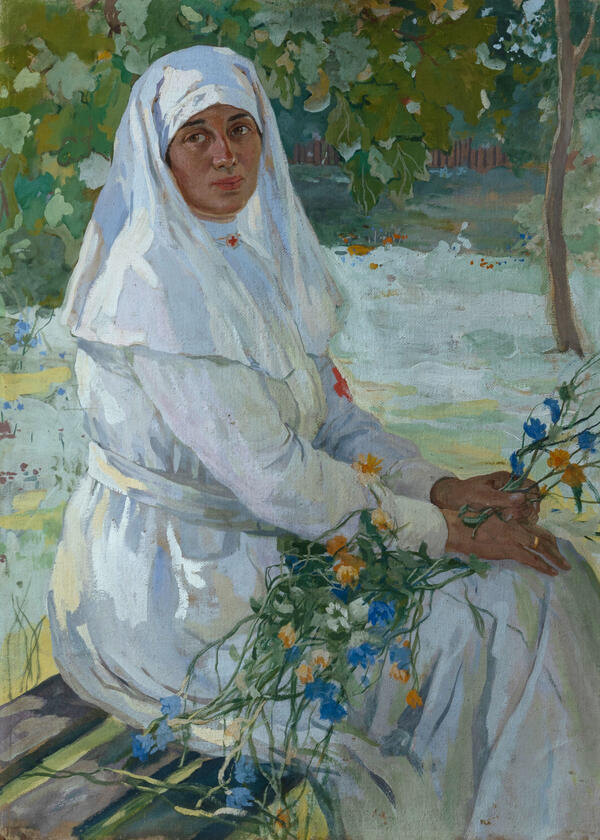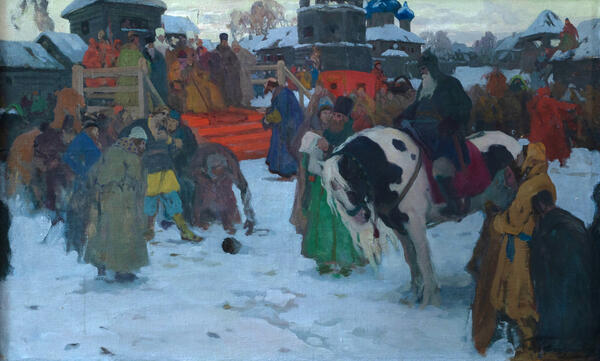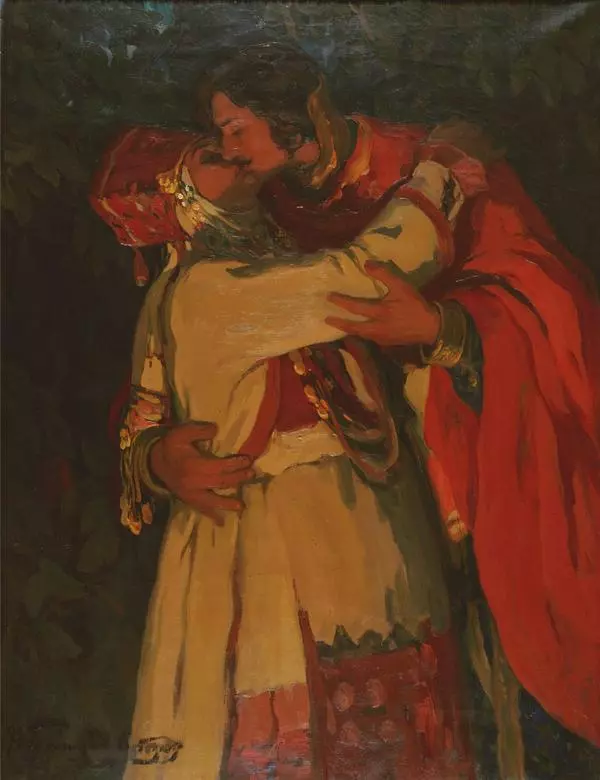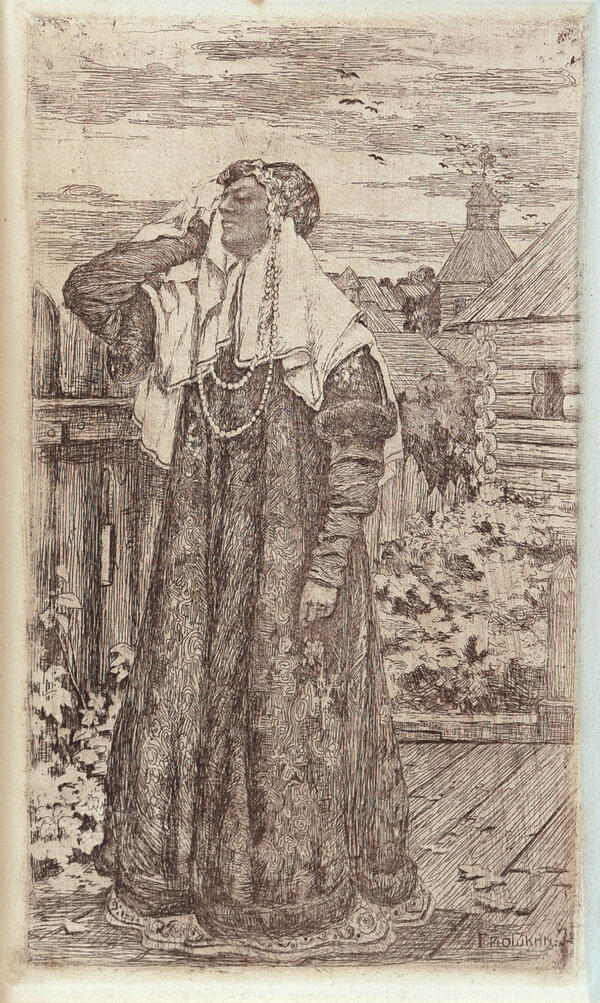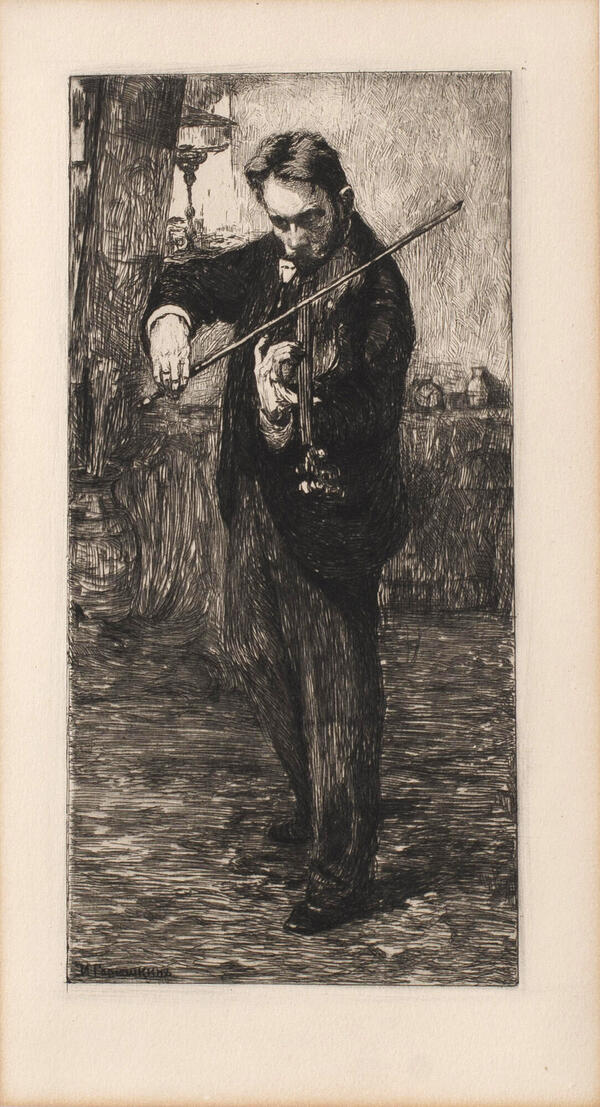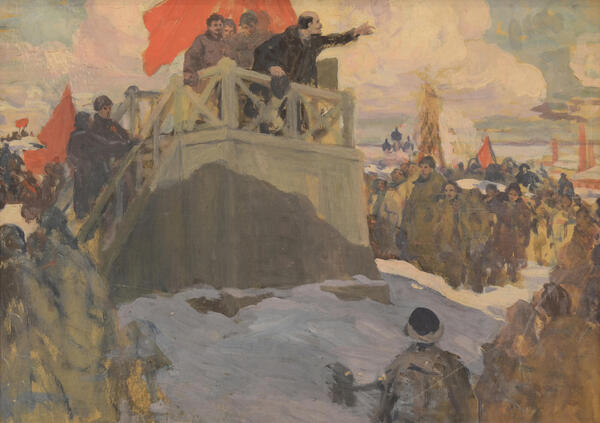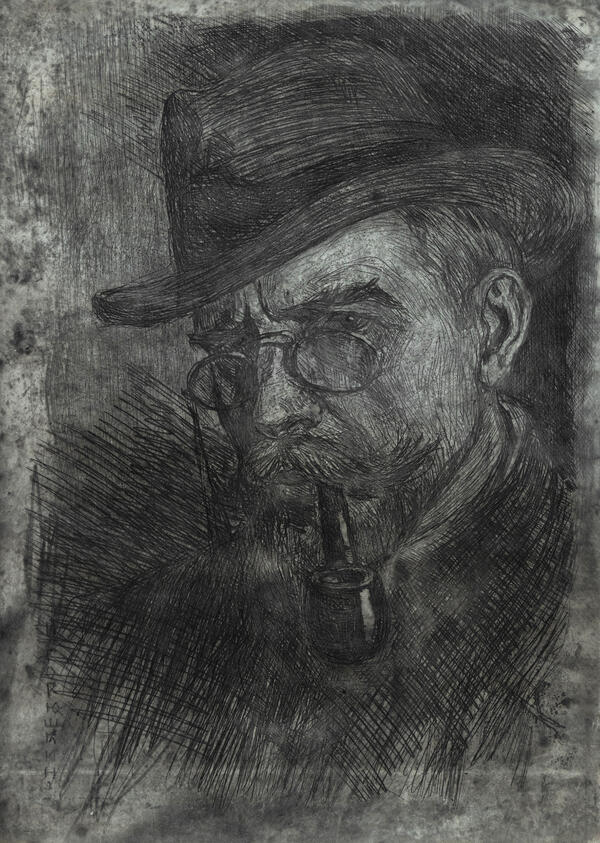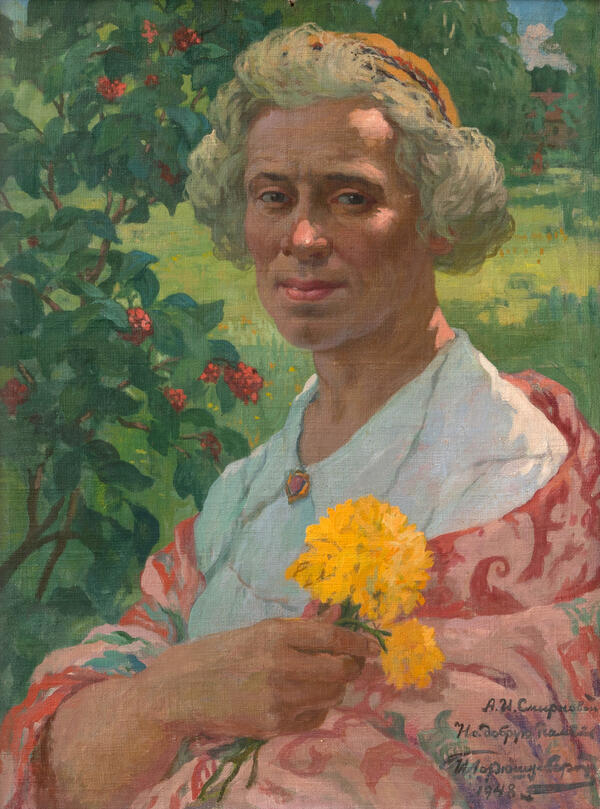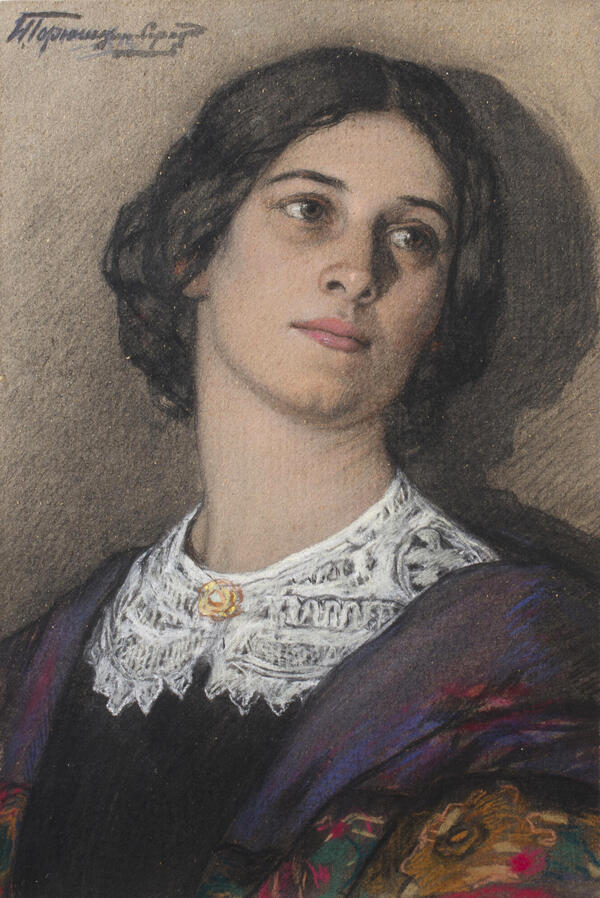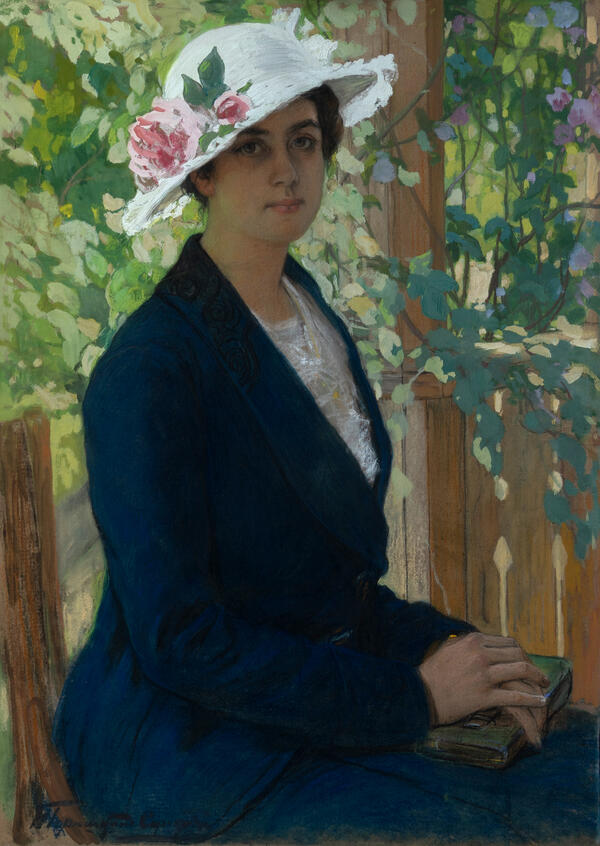The artist Ivan Silych Goryushkin-Sorokopudov was an admirer of antiquity. He studied ancient Russian architecture and collected antique clothes and household items. However, in his paintings, he did not aim to document the events of the past exactly. Instead, it was important for him to convey the very idea of the life of the past as it was preserved in people’s memories. This is particularly evident in the painting “Market Day in an Old Town”.
The artist turned a simple everyday scene into a colorful story about the old Russian provincial life. Near the monastery walls with a wide arch, there is a bustling market. The scene is illuminated by the rising sun. The deep blue domes of the cathedral and massive green fortress walls rise majestically in the background.
Under the canopies, which are covered in a thick layer of fresh snow, goods are displayed in the shops crowded by people. To the right, a young woman and man are walking along the street. The man is carrying a small bundle and a string of pretzels. A horse-drawn sled is carrying a load towards the gate.
The artist skillfully depicted the women’s shawls, headscarves, caftans, fur coats, sheepskins, and hats. A soft humming sound seems to float over the scene, echoed by the bell over the arch. “Market Day in an Old Town” is a classic example of the art of Ivan Goryushkin-Sorokopudov.
The painter achieved the emotional effect not by adding numerous elaborate details but rather by conveying the overall atmosphere and mood of the scene. He sought to capture the timeless folk traditions of the past. An important aspect of the artist’s work was the portrayal of such everyday scenes in which people are connected to nature and its state. The social and historical details take a back seat in this composition with a clear design.
In the early 20th century, many Russian artists found inspiration in the country’s history. For example, the opera “Boris Godunov” by Modest Mussorgsky was performed regularly in St. Petersburg and Moscow theaters from 1873. The opera also made its way to the provincial stages in Kazan in 1899, as well as in Orel, Voronezh, and Saratov in 1900. Ivan Goryushkin-Sorokopudov was acquainted with actors and directors of the Russian Empire and could have attended the performances of “Boris Godunov” both in St. Petersburg, before moving to Penza, and in the provinces.



